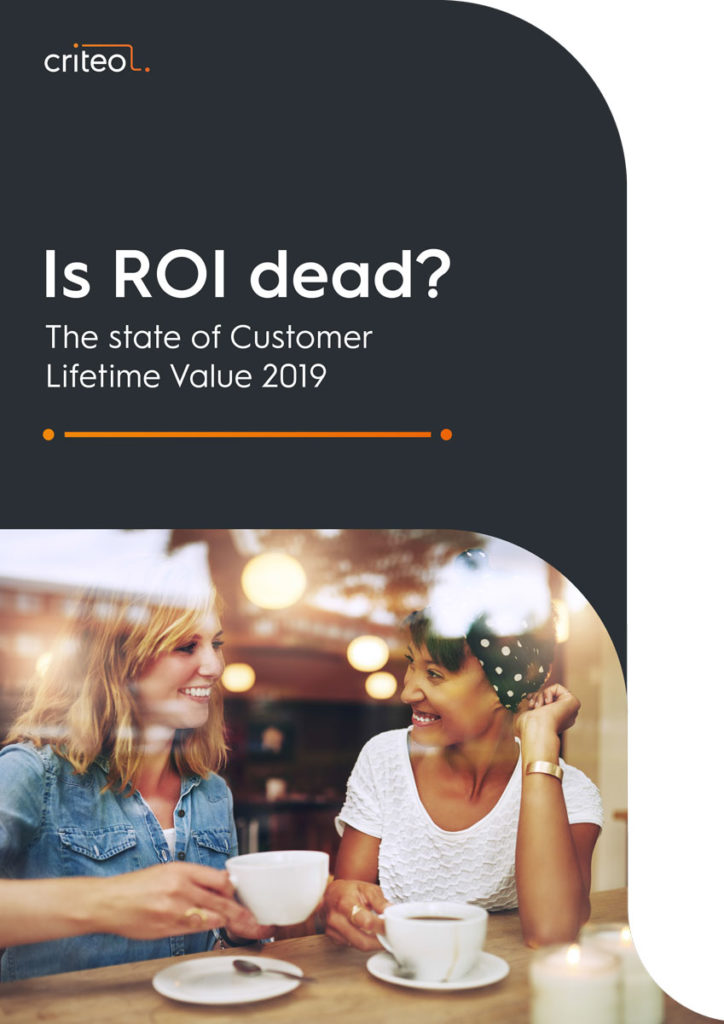
Criteo, the advertising platform for the open Internet, reveals that despite growing awareness of Customer Lifetime Value (CLV), a lack of digital skills, customer data, and organisational silos are holding back its use as an actionable business metric.
In its 2019 report, Is ROI dead? The state of Customer Lifetime Value 2019, Criteo benchmarks CLV awareness and adoption over the last 12 months. The study reveals a significant increase in marketers who have a high awareness of CLV (43% in 2019 vs. 34% in our 2018 survey) and in organisational efforts to monitor CLV (32% vs 24%).
However, the study also highlights three major data, business, and skills gaps that hold organisations back from making CLV an actionable metric. Firstly, a lack of understanding within the business typically manifesting as an inability to bring all stakeholders on board with the measure; second, challenges around finding and using the data necessary for a complete picture of CLV, and third, a struggle to retain the appropriate in-house talent to operationalise the measure.
“The adoption of CLV reflects an important shift in the way businesses look at customer relationships, from short-term profits to long-term sustainable relationship. The truth is, for many marketers, ROI is no longer fit for purpose. The study shows that the industry is looking for a more sophisticated metric that gives businesses a deeper understanding of their customer relationships and their value over time,” says Elizabeth Brennan, Director Account Strategy & Sales, UK, Criteo.
In addition, the findings show an encouraging level of agreement on the benefits organisations gain by using CLV including increased customer retention (64%), gaining more sales (59%) and greater brand loyalty (58%). CLV has emerged a key strategy for driving loyalty, an area that remains a battleground for UK brands according to Criteo’s “Why We Buy” survey conducted at the same time. The survey revealed 64% of shoppers are willing to consider new brands, with “value for money (63%), product selection (43%), customer service (44%) and low prices (43%) the most prevalent reasons for consideration.
The data gap
UK marketers are generally sophisticated in their use of data, but Criteo’s research highlighted some significant challenges in getting full value from customer interactions and behavioural habits. Key barriers include tracking customers cross-device (30%), inability to collect data due to users not being signed in (23%), and an inability to track single-use products (21%).
The business gap
Two thirds (66%) of respondents said their organisation could monitor CLV better, with specific business challenges identified including unsophisticated strategy (20%), lack of senior buy-in (20%) and organisational siloes (17%). The results highlight the need to get buy-in from senior business leaders and department heads if CLV is to become a company-wide endeavour.
The skills gap
The skills gap refers to a struggle to retain the appropriate in-house talent, or engage the external support required to operationalise CLV. The research showed skills as a common pain-point; 40% of respondents said their organisation lacks in-house skills to monitor CLV (up from 26% in 2018), 27% find it too complicated to monitor and 18% are unable to implement their learnings. Scarcity of talent appears to be an issue across all enterprises but was particularly pronounced among larger businesses (500 or more employees).
“Marketers, senior management and lines of business heads all have important roles to play in bridging these gaps and making CLV an actionable way to monitor and enhance relationships with existing customers and prospects. With deeper understanding and an increased ability to implement, we believe that CLV could replace return on investment (ROI) as the primary measure for the success of customer relationships and a key driver for loyalty in a competitive marketplace,” adds Brennan.
Now in its second year, the findings are part of a UK-wide study into 100 marketers’ views on measuring customer lifetime value. Coupled with the opinions of over 1,000 UK consumers, the report also explores the role CLV is currently playing within enterprises. Key insights include:
- 52% said they were using ‘predictive CLV’, i.e. a projection of how much revenue a customer will generate for a business over the course of the customer relationship, while 47.9% were using ‘historic CLV’, i.e. the sum of all profits from a customer’s past purchases.
- Organisations mainly saw benefits of monitoring CLV in increasing customer retention (64%), gaining more sales (59%), encouraging greater brand loyalty (58%) and improving personalisation (47%).
- In terms of what a business’ CLV strategy is monitoring, the research identified bringing customer records together to create a view of their journey (37%), measuring profit at each point (29%) and identifying moments where value is created (19%) as the main areas of focus.
Source: Criteo

You must be logged in to post a comment Login